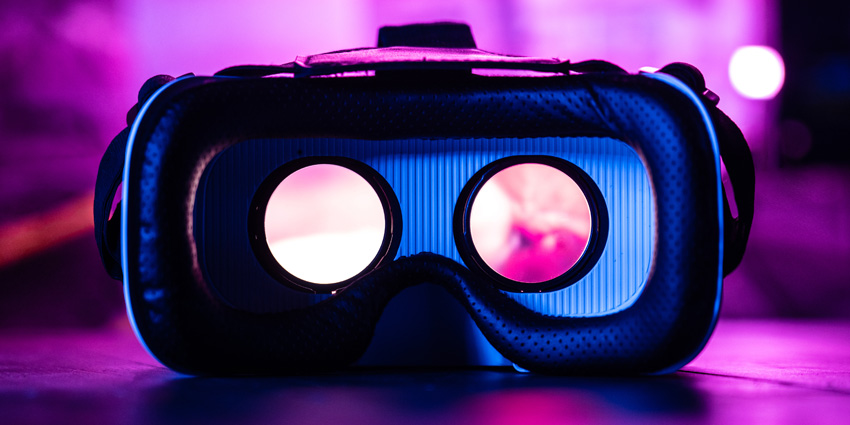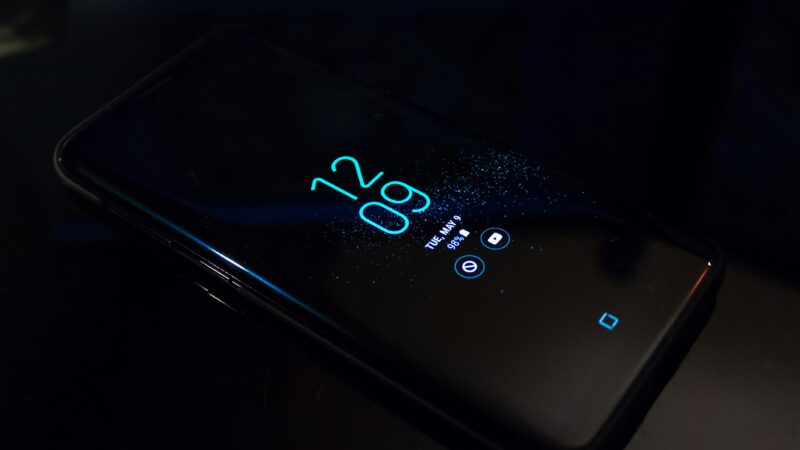Future of VR in 2025

Future of VR in 2025: The year 2025 is poised to be a breakthrough year for VRs, with slimmer headsets, AI-powered immersion, and mainstream adoption accelerating. The user probably wants a clear breakdown, maybe similar to the smart ring showdown. The future of Virtual Reality (VR) is poised to be transformative, driven by technological advancements, expanding applications, and evolving societal integration. Here’s what’s coming:

Meta Quest 4:
Meta’s next-gen Quest 4 is set to redefine standalone VR with cutting-edge displays, AI enhancements, and a breakthrough slim design. Here’s everything we know based on leaks, patents, and industry trends.
Expected Features:
Design & Comfort
- 40% thinner than Quest 3 (closer to ski goggles than a headset)
- New “Balanced” strap with counterweight for long sessions
- Materials: Magnesium alloy frame + ventilated facial interface
Display & Visuals
- Dual 4K Micro-OLED panels (2160×2160 per eye)
- 120Hz refresh rate with HDR10+ support
- Pancake lenses v3 – 30% wider sweet spot than Quest 3
Performance
- Qualcomm Snapdragon XR2 Gen 3 chip (30% faster GPU)
- 12GB RAM + 256GB/512GB storage options
- Active cooling with whisper-quiet fans
Mixed Reality
- Full-color 18MP passthrough (4x better than Quest 3)
- Depth sensor returns for better object occlusion
- Dual LiDAR sensors for room mapping
Controllers & Tracking
- Self-tracking controllers (no rings, like Quest Pro)
- Ultrasonic haptics – realistic texture feedback
- Upper body tracking via chest estimation
Price & Release Date
- Base Model: 499(128GB)/499(128GB)/599 (256GB)
- Pro Model: $899 (with eye/face tracking)
- Release: September 2025 (Meta Connect)
- Pre-orders: July 2025
Why It’s a Game-Changer
- First truly comfortable daily-driver VR
- No PC/console needed for AAA experiences
- Mixed reality that rivals Apple at 1/6th the price

Apple vision pro2
Apple’s second-generation Vision Pro 2 is poised to redefine augmented and virtual reality with groundbreaking upgrades. Here’s everything we know based on leaks, patents, and industry analysis.
Expected Features
Design Revolution
- 50% thinner than Gen 1 (approaching sunglasses profile)
- New “Carbon Fiber Lite” frame (under 400g vs. original 450g)
- Magnetic prescription lenses with auto-adjusting diopters
Display & Visuals
- Dual 8K Micro-OLED (3840×3840 per eye, 10,000 nits peak brightness)
- “Retina VR” mode (120 PPD, eliminating screen-door effect)
- Variable focus lenses (eliminating vergence-accommodation conflict)
Performance Leap
- M4/M5 chip with dedicated XR2 co-processor
- 16GB unified memory + 1TB/2TB storage options
- Active liquid cooling (silent operation)
Mixed Reality 2.0
- 8K passthrough with HDR and night vision mode
- TrueDepth camera array v2 (sub-millimeter hand tracking)
- LiDAR 2.0 (real-time 3D mesh generation)
New Input Methods
- Neural Interface Band (optional EEG headband for thought controls)
- Haptic gloves (patent-pending air pressure feedback)
- Revolutionary “Gaze + Whisper” UI (minimal hand gestures needed)
Price & Availability
- Starting Price: $3,299 (same as Gen 1)
- Pro Model: $3,999 (with neural band and advanced lenses)
- Release Date: November 2025 (Apple’s FY2026 Q1)
- Pre-orders: September 2025 (with iPhone 17 launch)
Why It’s Revolutionary
- First “all-day wearable” AR device (4hr battery, 8hr with belt pack)
- Enterprise-ready (FDA approval for medical use pending)
- Seamless Apple ecosystem integration (instant handoff with Mac Studio)

3. Sony PSVR3 Rumored Next-Gen PlayStation VR
Sony’s next-generation PSVR3 is expected to launch alongside (or shortly after) the PS6, pushing the boundaries of console-based virtual reality. While Sony hasn’t officially confirmed its existence yet, leaks, patents, and industry trends paint an exciting picture.
Expected Features
PlayStation 6-Powered Performance
- 8K HDR Display (4K per eye, upscaled via AI)
- 120Hz+ Refresh Rate (with foveated rendering for smoother performance)
- PS6’s Custom APU – Ray tracing, 3D audio, and ultra-low latency
Design & Comfort
- 50% Lighter than PSVR2 (target: ~350g)
- Breathable Materials – Improved airflow for long gaming sessions
- Inside-Out Tracking (No external cameras or base stations)
Controllers & Haptics
- DualSense VR Controllers – Adaptive triggers, haptic feedback, and finger tracking
- Full Body Tracking (Optional accessory for VR fitness/social games)
Connectivity
- Wireless & Wired Modes – Uses Wi-Fi 7 for low-latency wireless play
- Backward Compatibility – Supports PSVR2 games with enhancements
Exclusive Games (Rumoured)
- Half-Life: Alyx 2 (PSVR3 timed exclusive)
- Resident Evil 9 VR Mode
- New Astro Bot (Built for PSVR3)
- Horizon: Call of the Mountain 2
Expected Price & Release Date
- Price: 600–600–800 (with possible bundle options)
- Release Date: Late 2026 (likely after PS6 launch)
PSVR3 vs. Meta Quest 4 vs. Apple Vision Pro 2
| Feature | PSVR3 | Meta Quest 4 | Apple Vision Pro 2 |
| Platform | PS6 Required | Standalone | Standalone (macOS/iOS) |
| Resolution | 8K (4K per eye) | 4K per eye | 8K per eye |
| Tracking | Inside-out + Eye | Inside-out + Face | LiDAR + Hand/Eye |
| Exclusives | AAA PlayStation VR | Meta Studios titles | Apple Arcade VR |
| Price | 600–600–800 | 499–499–899 | $3,299+ |
Why PSVR3 Could Dominate?
Best for AAA VR gaming (PlayStation exclusives)
Seamless PS6 integration (no PC/phone needed)
Wireless freedom with Wi-Fi

4. valve Deckard – The Ultimate PC VR Headset
Rumoured to be Valve’s next-gen standalone/PC hybrid VR headset, the Deckard could revolutionize high-end VR gaming. Here’s everything we know from leaks, patents, and Valve’s history of innovation.
Expected Features (Based on Evidence)
Display & Optics
- Dual 4K Mini-LED/LCD Panels (2160×2160 per eye, 120Hz+)
- Custom SteamVR Lens v2 (40% wider sweet spot than Index)
- Dynamic Foveated Rendering (Eye-tracking powered)
Performance & Hardware
- Standalone & PC Modes (Like Quest Link/Air Link but for SteamVR)
- Custom APU (Combining Zen CPU + RDNA GPU architecture)
- Wi-Fi 6E/7 Wireless Streaming (Low-latency PC VR without cables)
Input & Tracking
- Index 2.0 Controllers (Upgraded finger tracking, longer battery)
- Lighthouse Tracking Optional (Inside-out + External sensor support)
- Full Body Tracking Support (SteamVR 2.0 ecosystem)
Software & Ecosystem
- SteamOS VR Mode (Standalone gaming library)
- Full SteamVR Backwards Compatibility (Index/Vive games work)
- Half-Life: Alyx 2 (Rumored Launch Title)
Expected Price & Release
- Price: 999−999−1,499 (Standalone + PC VR combo)
- Release Window: Late 2025 – 2026 (Likely after Steam Deck OLED update cycle)
Valve Deckard vs. Competitors
| Feature | Deckard | Meta Quest 4 | PSVR3 |
| Type | Standalone + PC VR | Standalone | PS6-Powered |
| Resolution | 4K per eye | 4K per eye | 8K combined |
| Tracking | Inside-out + Lighthouse | Inside-out | Inside-out |
| Exclusives | Half-Life Alyx 2? | Meta Studios | PlayStation |
| Price | $999+ | $499+ | 600−600−800 |
Why Deckard Could Be Revolutionary?
True high-end PC VR without wires (Wi-Fi 6E/7 streaming)
SteamVR 2.0 ecosystem (Backwards compatibility + Index support)
Valve’s commitment to open platforms (No locked ecosystem)







